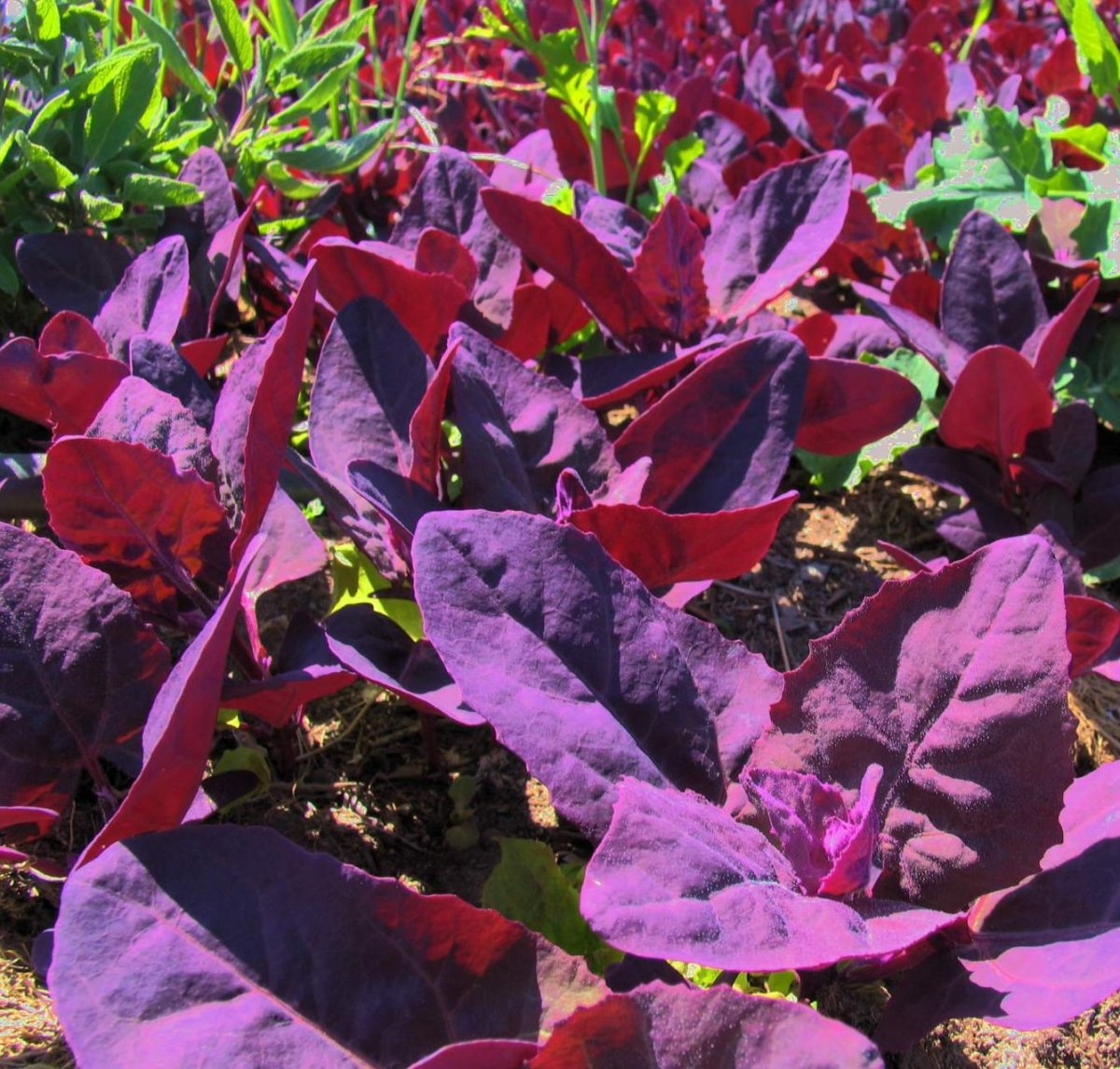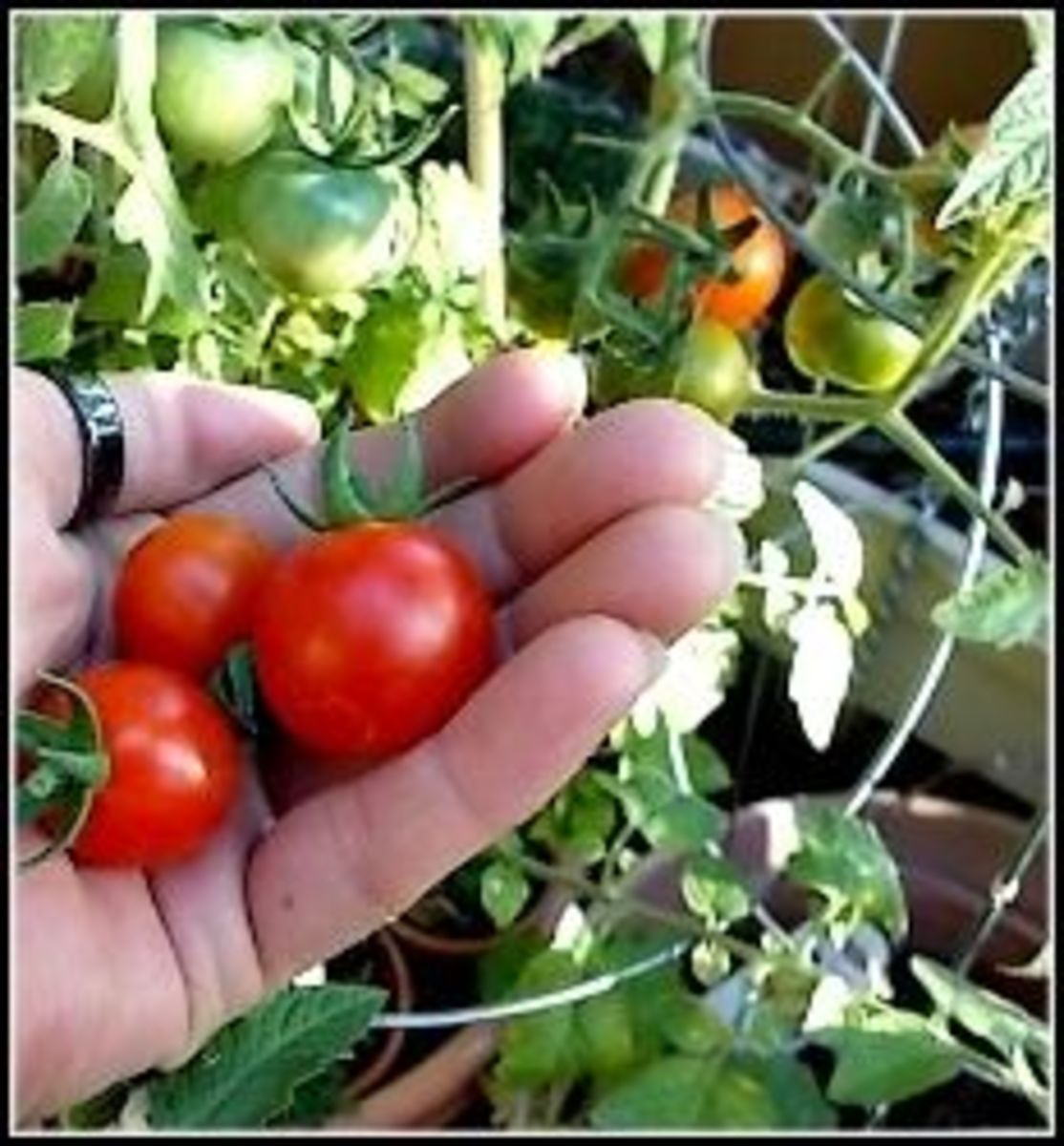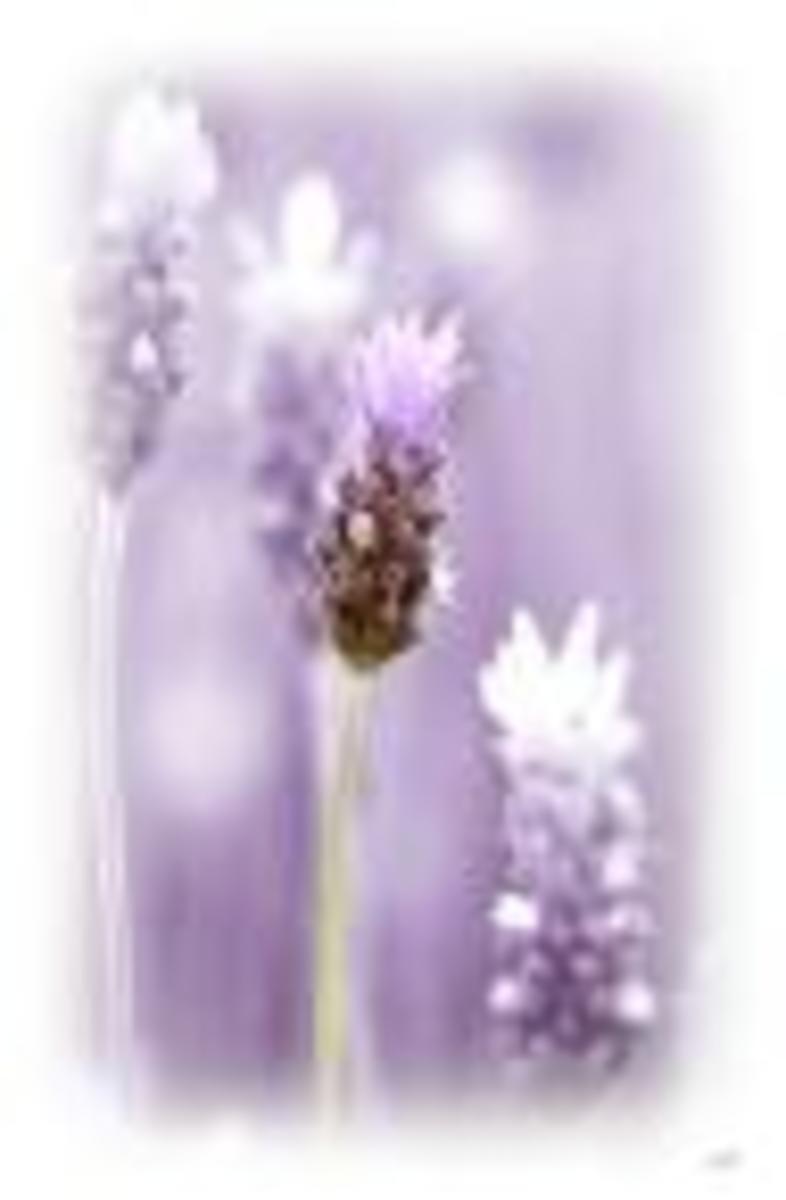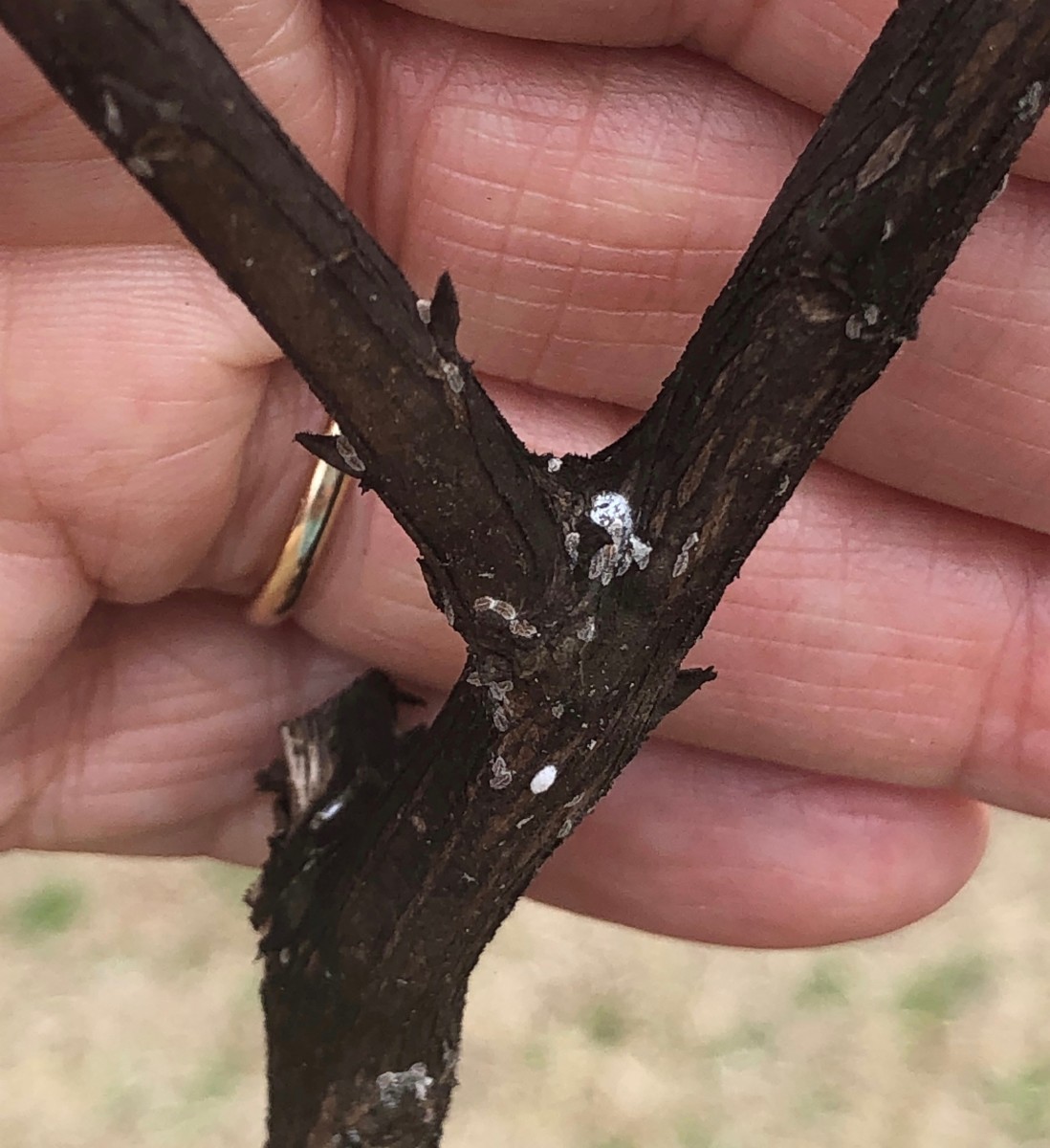How to Grow Sweet Stevia in a Container Garden
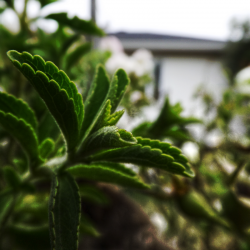
Sweeten Your Garden with Stevia
Stevia Rebaudiana, often called sweet stevia or simply stevia, is the plant from which several zero calorie sweeteners, including Truvia and PureVia, are made. There are also many varieties of natural stevia-based sweeteners, generally available in powdered and liquid form. These can be made at home from high quality stevia leaves.
Stevia-based sweeteners can be used to sweeten foods and beverages without adding calories. The leaves themselves can be used whole, chopped, or ground.
Photo by Cassandra Gregg
The leaves have more of a "flavor," as opposed to pure sweetness, than either commercial or homemade extracts, and will not, of course, dissolve in liquids. The leaves of a stevia plant can be up to thirty times as sweet as sugar!Stevia grows to a height of two to three feet. Its lush, green foliage makes it an attractive plant for a patio garden. It grows well in containers. A hardy annual or tender perennial, stevia will continue to produce bountiful naturally sweet leaves for years in areas where winters are mild, or where the plants can be brought inside for particularly cold weather.
Cuttings, Live Plants, and Seeds - Starting Your Stevia Patch
Stevia can be started from seed, cuttings, or live seedlings. Of these, my personal favorite method is to use cuttings from an established plant in my own garden or that of a friend. That way, I have a chance to taste the leaves.
The sweetness of stevia leaves is due to steviol glycosides, and the levels of these delicious compounds can vary pretty widely from one plant to another. Unlike plants grown from seed, cuttings are always identical to their "parent." A cutting taken from a very sweet stevia plant will produce very sweet leaves of its own!
If you don't have an established stevia plant (or a friend with one), don't despair. As stevia-based sweeteners have become more popular, both seeds and live plants have become more reliably high-quality. Purchase either from a reputable nursery or a well-rated online vendor, and you'll be enjoying fresh, sweet stevia leaves before you know it.
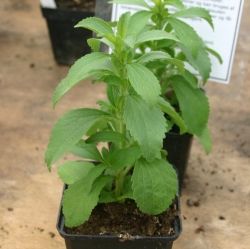
Food, Water, and Loads of Sunshine!
Mix a healthy serving of compost into high quality planting mix or fertile soil. Stevia likes well-drained soil with lots of organic matter. As your stevia grows, it will benefit from regular supplementation with additional compost or a balanced commercial fertilizer.
Choose the sunniest spot you can find for your stevia. Stevia will grow in partial shade, and won't flat-out die even in near-complete shade, but thrives in full sun.
Photo by Sten Porse
It is normal for the leaves to wilt slightly during the hottest hours of the day, provided they perk up again as the day cools. so don't assume some wilting in the afternoon means your plant needs more water. In addition to causing the roots to rot, too much water can reduce the sweetness of the leaves.Buying Containers? - Consider Smart Pots
Smart Pots are made of fabric, which allows perfect drainage for rot-prone stevia roots. They also root prune your plants, which forces the roots to branch out, creating a healthier root mass. While they're certainly not the most attractive planters available, there are ways around this drawback.
Smart Pots can be slipped inside larger decorative containers. Better yet, use side pocket planting to cover the fabric sides of your Smart Pot with attractive foliage while dramatically increasing your available planting space. Simply cut an "X" in the side of the container, and plant something in the hole! Strawberries do very well in side pockets on a 5 to 10 gallon Smart Pot, with stevia growing happily from the top.
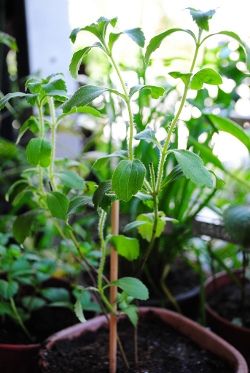
Trim the Tops from Your Plants Regularly
Prune the tops of your growing stevia plants as necessary. Stevia will produce bushier, more attractive foliage if the top three inches are trimmed from each plant when it is about a foot tall. Treat the resulting top cuttings with rooting hormone and start them indoors for a new stevia crop. Rooted cuttings also make attractive and unique gifts.
Use the trimmings from your established plants in the kitchen as a flavorful natural sweetener. Dried leaves may be steeped with tea or coffee, ground and used as a powder, or made into extracts or syrups. Fresh leaves are also excellent in tea or coffee, and delicious in fruit desserts!
Stevia does not carmelize like sugar does, though it can still replace part of the sugar in desserts where some sugar is required for texture. In desserts where sugar is used purely for sweetness, stevia or stevia extract can replace all of the sugar.
Mild Winters? - Growing Stevia as a Perennial
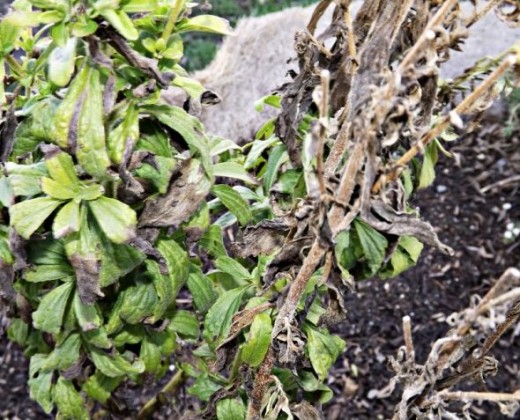
Mostly-dead stevia will bounce back fine in spring.
Photo by Cassandra Gregg
Stevia can be grown as a perennial anywhere where winters don't bring prolonged snow or heavy frost. In our home by the sea, our stevia turns pretty sad and ugly for a few months at winter's coldest, but doesn't die.
Fresh growth at the first touch of spring
Photo by Cassandra Gregg
The plant in the picture above is starting to come back to life. Though it still looks pretty pitiful, we see new, fresh, green growth right at the base of the plant. It'll be back as spring progresses, and larger and more lush this summer than last.
How to Dry and Use Homegrown Stevia
In these great videos, Zach Tato demonstrates harvesting, drying, and grinding home grown stevia for use in the kitchen. Zach's method is simple, and requires no special equipment. Easy to grow, easy to use... why doesn't every garden have a patch of stevia?
Enjoy! - Use Your Stevia Fresh or Dried
Enjoy your stevia leaves fresh or dried throughout the year. To encourage foliage growth, pinch off the small, white flowers as soon as they appear. Plants will continue to produce well for three years or longer, provided they are brought inside if prolonged, heavy frost or snow is expected.

Have a growing tip, recipe, or question about stevia? Share it here, or just say "Hi!"

